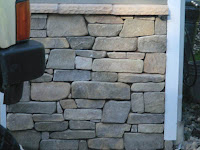Chimney Maintenance
•Have your chimney checked every year by a chimney sweep. You will be able to find chimney repair problems and solve them before they become more serious safety hazards•Have a chimney cleaning as often as needed to keep your chimney free of sooty build-up
•Make sure you are burning only well-seasoned hardwoods (split and dried for six months to one year)
•Use a fireplace screen to prevent sparks or embers from flying into the room
•Ask your chimney sweep to ensure that your chimney is properly lined
•After a violent storm, earthquake, or flood, have your chimney thoroughly checked for damage on both the inside and outside
Prevention
•Keep the area in front of the fireplace clear of rugs, wood or anything combustible. If keeping the area clear is not an option, find a flame retardant rug•Get a chimney cap. While this does not replace the need to have your chimney cleaned, it will prevent debris and animals from getting inside
•Install carbon monoxide detectors in your home





















